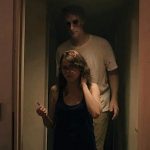 Weird Stuff
Weird Stuff  Weird Stuff
Weird Stuff  Politics
Politics 10 Political Scandals That Sent Crowds Into the Streets
 Weird Stuff
Weird Stuff Ten Bizarre Facts About The Doge Meme
 Our World
Our World 10 Ways Your Christmas Tree Is More Lit Than You Think
 Movies and TV
Movies and TV The 10 Coolest Stars to Set Sail on The Love Boat
 History
History 10 Things You Didn’t Know About the American National Anthem
 Technology
Technology Top 10 Everyday Tech Buzzwords That Hide a Darker Past
 Humans
Humans 10 Everyday Human Behaviors That Are Actually Survival Instincts
 Animals
Animals 10 Animals That Humiliated and Harmed Historical Leaders
 History
History 10 Most Influential Protests in Modern History
 Weird Stuff
Weird Stuff 10 Funny Ways That Researchers Overthink Christmas
 Politics
Politics 10 Political Scandals That Sent Crowds Into the Streets
 Weird Stuff
Weird Stuff Ten Bizarre Facts About The Doge Meme
Who's Behind Listverse?

Jamie Frater
Head Editor
Jamie founded Listverse due to an insatiable desire to share fascinating, obscure, and bizarre facts. He has been a guest speaker on numerous national radio and television stations and is a five time published author.
More About Us Our World
Our World 10 Ways Your Christmas Tree Is More Lit Than You Think
 Movies and TV
Movies and TV The 10 Coolest Stars to Set Sail on The Love Boat
 History
History 10 Things You Didn’t Know About the American National Anthem
 Technology
Technology Top 10 Everyday Tech Buzzwords That Hide a Darker Past
 Humans
Humans 10 Everyday Human Behaviors That Are Actually Survival Instincts
 Animals
Animals 10 Animals That Humiliated and Harmed Historical Leaders
 History
History 10 Most Influential Protests in Modern History
10 Horror Films That Failed to Launch Their Franchise
Horror, more than any other cinematic genre, is obsessed with franchise building, owing to the low-cost, high-reward potential. But movie making is big business, and financiers and studios are not afraid to pull the plug if they don’t see a big payday ahead, no matter the project.
These movies were set up for sequels and specifically designed and positioned by their studios and producers to ignite franchises. But there is folly in setting something up as a series when it is far from guaranteed. Some movies trip, fall, and spoil the whole thing, others are let down by poor audience attendance, or crushed by the void of development hell. But for each of these 10 films, there were no sequels, just abandoned plans, cancellations, and regrets.
Related: 10 Directors Who Made One Horror Film & Quit
10 All Cheerleaders Die (2013)
All Cheerleaders Die began life as a super low-budget student movie, shot by Lucky McKee and Chris Sivertson in 2001, but garnered enough attention to score some proper financing allowing the writer-director duo to remake it in 2013.
The film stars Caitlin Stasey as Maddy Killian, a high school cheerleader who deals with locker room politics, scumbag boyfriends, and the death and subsequent resurrection of the entire cheerleading squad. The cheerleaders kill the football squad, the footballers kill the cheerleaders, and there is one almighty mess to clean up.
The film ends with a stinger teasing the return of the cheerleader whose death started the whole thing, and reveals via the title card that film is part one in a series. However, funding for a sequel relied on the film’s performance, and it only secured a limited release before going to physical and digital media, where it took just $280k domestically. Twelve years on, Stasey is way too old to play a high schooler, McKee and Sivertson have moved on with countless other projects, and no sequel has ever emerged.[1]
9 Hansel & Gretel: Witch Hunters (2013)
Tommy Wirkola’s Hansel & Gretel did the unthinkable, taking a beloved childhood fairytale and transforming it (or at least its characters) into mercenary badasses who travel the country killing for cash. Offering up a new, action-filled take on a classic story, a grown-up Hansel (Jeremy Renner) and Gretel (Gemma Arterton) take their first kill as their calling, and go after witches with fiery vengeance.
The film did well at the box office (returning over four times its budget), and it was the perfect set up for a franchise, with the potential of expanding the universe and adding in new horrifying creatures and leather-garbed, ass-kicking fairytale characters from across the canon. But despite Wirkola, Paramount and producer Adam McKay all initially being on board, and promises being made about the “insane” scope of future films, none appeared.
Wirkola jumped ship in 2014, and Renner’s schedule with big franchises like Marvel and Mission: Impossible made his involvement nigh impossible. As a result, the franchise never got going, betraying what was an awesome premise.[2]
8 Scary Stories to Tell in the Dark (2019)
In 2019, Guillermo del Toro and André Øvredal brought short stories from Alvin Schwartz’s Scary Stories to Tell in the Dark horror collection to the silver screen, weaving together narratives in which teenagers in the fictional Pennsylvanian town of Mill Valley find a supernatural story book and fall prey to its terrifying tales.
With over 82 stories to choose between, drawn from across Schwartz’s three Scary Stories books, del Toro and Øvredal were spoiled for choice—and had big plans for subsequent entries in the series. But while this writer-director duo ought to have been a veritable powerhouse, given their credentials in the horror genre, the film failed to land, scoring poorly with audiences.
Although a sequel was tentatively green-lit at the time and the writers of the second movie’s script, Dan and Kevin Hageman, remain hopeful, del Toro and Øvredal have moved on to other projects. After six years in development hell, and a year now of radio silence on the project, the odds of ever seeing a Scary Stories sequel are slim to none.[3]
7 World War Z (2013)
Marc Forster’s World War Z shifted Brad Pitt’s boy next door image and reputation for weighty dramas by pitting him against zombie hordes as Gerry Lane, a U.N. investigator seeking a solution for a growing apocalypse situation. Adapted from Max Brooks’s novel, the film altered the scope of the source text by focusing on one character and having the bulk of its narrative take place over a shorter time, but with two planned films to follow.
Despite this, the budget for the production ballooned, landing in the region of $190–269 million. This meant that, even after taking $540 million at the box office, it wasn’t the financial success Paramount had in mind. Despite this, sequel plans moved ahead, albeit with a smaller scale in mind—similar to The Last of Us—and several directors attached, including David Fincher.
By 2019, however, the sequel had been canceled, with the production troubles, costs, and earnings of the first film, alongside the lesser but still excessive budget of the sequel, all being cited as reasons for Paramount’s decision.[4]
6 Dog Soldiers (2002)
Werewolf horror Dog Soldiers may have launched the career of writer-director Neil Marshall, but it failed to do the same for its own franchise.
During a military training exercise in the Scottish Highlands, a squad of six soldiers comes under attack from a pack of werewolves and must negotiate the wilderness while fighting for their lives. It’s a simple setup for what turns into a riveting monster movie, creating genuine fear through the remote setting, smart directing, and realistic practical effects.
A sequel, Dog Soldiers: Fresh Meat, was in production just a year and a half after the film’s release—with a shooting schedule, producers, funding, and a director in Andy Armstrong—but failed to materialize. Marshall himself began developing another one of his sequel ideas in 2018, with plans for the film to lead into a trilogy. Still, after six years of trying to negotiate for the rights with the U.S. producer David E. Allen (who led the failed attempt to make Fresh Meat), he was ghosted by Allen’s company. He had to officially call time on the possibility of a franchise.[5]
5 The Green Inferno (2013)
Despite the varying quality of his films, Eli Roth is nonetheless one of the more significant horror directors of the 21st century, helming the likes of Cabin Fever, Thanksgiving, and, of course, The Green Inferno.
A cannibal movie set in the Amazon rainforest, The Green Inferno finds a group of college activists stranded and subjected to the tortures of a native tribe. Granted, it’s not the most culturally sensitive of films, but it delivers on the gore and pit-of-the-stomach dread horror fans show up for.
While most of Roth’s films have been standalone, he was responsible for the Hostel franchise, which made a sound return on a low budget. Thus, it wasn’t the craziest idea for him to envision The Green Inferno as a franchise, seeding a sequel with a post-credits stinger, and planning “an entire world of stories, legends, myths and monsters.”
Despite getting started on development straight away, and reportedly still working on it in 2016, news of a Green Inferno sequel has gone dark. Now, 12 years from the original, nine years since the last update, any possible franchise looks finished.[6]
4 Van Helsing (2004)
With Hugh Jackman starring as the titular monster hunter, Universal felt that Van Helsing would be their next big franchise in summer 2004. Having already made a new franchise of The Mummy (1999), they drafted in director Stephen Sommers, seeking to introduce a new generation of viewers to various horror figures from across literature, including the Wolfman, Count Dracula, Frankenstein’s monster, and even Mr. Hyde.
So confident was the studio in their ability to generate another big series, they threw everything at it in their pre-release marketing, including a half-hour animated episode called Van Helsing: The London Assignment designed to introduce the character to younger audiences and promote the upcoming film. But despite this sizeable campaign, Van Helsing only grossed $300 million at the global box office—not enough to justify either the studio’s marketing spend or planned franchise.
All sequel plans were scrapped and the property has lain dormant since, despite various attempts to get a reboot off the ground—the most recent of which was announced five years ago, and has had precious few updates since.[7]
3 Doom (2005)
Video game adaptations have been all the rage since the 1980s. Yet so few of them have actually worked, often drawing fans of the IP but failing to make headway with critics. And Andrzej Bartkowiak’s Doom is a testament to this fact.
Based on the chaotic first-person shooter of the same name, Doom stars Dwayne Johnson and Karl Urban as marines sent on a rescue mission to Mars, where demonic creatures have taken over—and the only route out is through them. There are enough guns, guts, blood, and action to sate fans of the game, yet the movie flopped on its face.
Producer John Wells was confident this would be the film to turn the tide on video game adaptations, with plans to replicate the franchise-spawning success of the original game. But the critics and fans hated it, and it only took $58 million at the global box office, against a $70 million budget. As a result, all franchise plans were scrapped. Universal rebooted the series 14 years later, with a straight-to-VOD feature that was disowned by the game’s developer and went nowhere.[8]
2 Friday the 13th (2009)
Reboots were all the rage in the late 2000s, and any dated or forgotten IP worth its salt was getting the Hollywood overhaul to start up a fresh new franchise and engage the 18-30s. Among them was Friday the 13th, a reimagining of Victor Miller’s films and slasher icon Jason Voorhees, which took some of the story of the original four Friday the 13th films and wove them into a new mythos.
Hoping to start a modern horror series on the back of the film, Warner Bros. had already planned a “Part 2” before the first film was finished. They publicly set release dates for just over a year after its release. Mixed messaging followed in the years thereafter, with producer Brad Fuller announcing the sequel’s cancellation in 2010 and then a finished script in 2011, which was abandoned when Warner relinquished their rights for the franchise to Paramount in 2013.
Not only did this end the new franchise before it got started, but it nailed the coffin of the old one, with no sequels, prequels, or otherwise having been made since.[9]
1 The Mummy (2017)
Rebooting The Mummy as a gritty action-horror was always going to be a tough sell, but if anyone could do it, it was Alex Kurtzman and Tom Cruise. But it doesn’t seem anyone could do it after all…
The Mummy stars Tom Cruise as former U.S. Army Sergeant Nick Morton, a kind of mercenary adventurer who unearths the cursed sarcophagus of an ancient Egyptian princess, and unwittingly releases her to wreak supernatural havoc on the modern world. Despite Kurtzman and Cruise’s best efforts, the Mission: Impossible-esque action sequences didn’t jell well with the horror elements, and the film was a critical failure.
But The Mummy didn’t just take itself down: it demolished Universal’s Dark Universe franchise in the process. The studio had planned an entire cinematic universe, weaving together its classic monsters, with the likes of Javier Bardem and Johnny Depp already signed on and doing promotional photoshoots. When The Mummy only returned around twice its production budget at the box office, the whole thing fell apart, producers and financiers jumped ship, and adaptations of Bride of Frankenstein, The Invisible Man, and Dr. Jekyll and Mr. Hyde were binned.[10]








